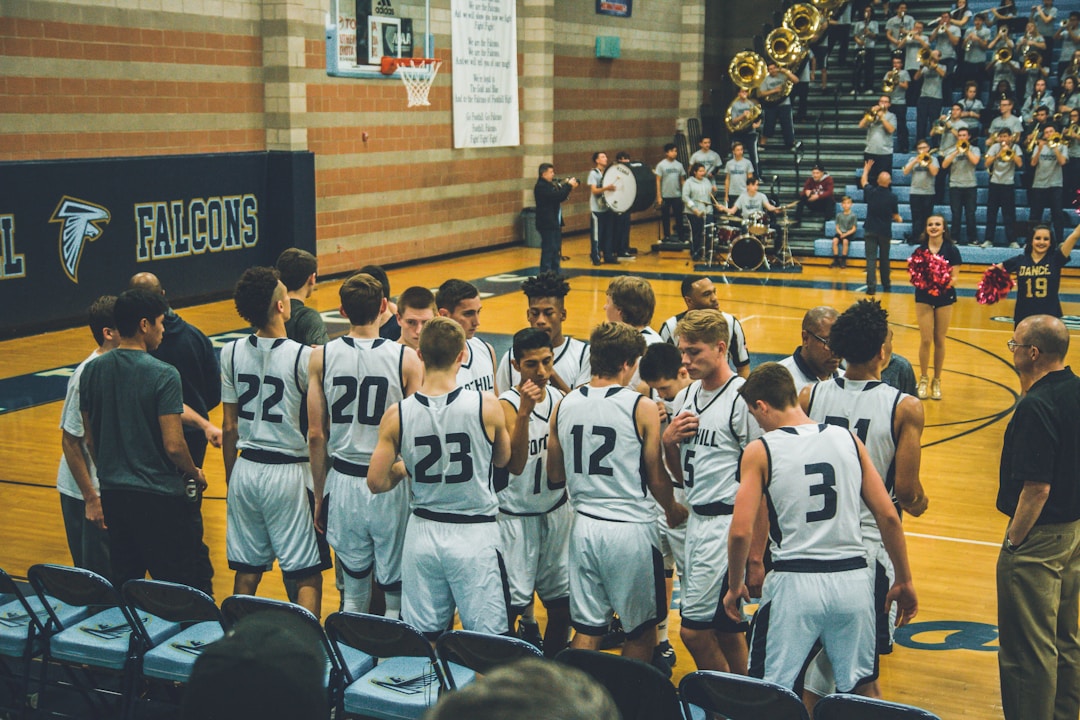Designing for Belonging is a critical concept in the quest for real Inclusion and Diversity. So far, most of the actions linked to D&I initiatives have insisted on the Change Management part, often focusing on a limited set of behaviours (anti-bias training, diversity training) or on specific policies and practices in the HR domain (recruiting, promoting, compensation). Some firms have also consistently addressed business actions to serve a more diverse customer base (for example, by fostering inclusive advertising practices).
We have already seen that the concept of Diversity and Inclusion should be expanded to ensure a real feeling of belonging for each individual in an organisation. A concept introduced by Pat Wadors, and that we have seen has a consistent business case. The question I want to tackle into this article, however, is broader and wants to look at how do we design an organisation that is made for Belonging? I will first check what others have suggested on the topic and then will try to frame a proposal of course of action by using as a reference the Organisation Evolution Framework I devised a few months ago.
- Designing for Belonging
- Belonging in Education
- Belonging to Space in Architecture
- Belonging and User Experience
- Defining Belonging through Othering
- Designing for Belonging
- Designing an Inclusive Business Model.
- Belonging in Strategy
- An Operating Model that creates Belonging
- Belonging and the Organisation Model
- Culture of Belonging
- Culture Creates Belonging.
- Purpose as Guiding Force
- Belonging to an Ecosystem
- Inclusive Leadership
- Conclusion: Where to start
- Comments and Feedbacks
- More posts like this
Designing for Belonging
The first question to answer is can we really Design for Belonging? Seen from an Inclusion and Diversity perspective, we see that most programmes in this domain have been having a pretty limited reach and often not really been applied to entire organisations in terms of redesign. But the question is broader, because it touches a truly human ability to create connection and meaning through belonging.
Belonging in Education
I got around the idea of Designing for Belonging as I happened to read a short article on the topic by the Design School at Stanford University. The post was focused on Design for schools and education, but the principles it outlined are, I believe, more “general” and can be applied to any organisation.
They have identified five dimensions of belonging that Design should take care of:
- Inviting An intentional request to have an individual member or group join your community.
- Welcoming Active hospitality. An act or series of actions that honour participants’ emotions and identities, allowing them to bring their full selves into an environment and not leave parts at the door.
- Knowing & Accepting Embracing participants fully, so they feel seen for who they are and understood in your organisation’s Culture. Not just whether a participant is known but how they are known.
- Participating & Contributing Authentically engaging a member of a community in ways so they know their voice matters to the community and makes the community even better. Includes giving feedback and having difficult conversations.
- Growing When a participant knows their contribution to the community also fosters personal growth for them as an individual.
Again, their concept was logically applicable to educational institutions, (where the idea of Belonging is vital for the construction of identities of young pupils and students). But the design elements are, I think, universal to any organisation.

Also here, five items have been identified: Space includes all the physical attributes of the location. Roles include the way we design all roles within an organisation, including their power levers. Objects how vital are some elements of clothing or furniture? Think, for example, for people with disability. Rituals as they constitute one of the visible aspects of Culture, they can be built to foster Inclusion and Belonging. And finally, Communication is a critical tool to be made to ensure a sense of Belonging is formed within the organisation.
All these elements can also be found in any organisation setting. But you immediately notice that not all of these are the usual items that D&I programmes address.
Belonging to Space in Architecture
An area where Belonging has been analysed in Design is through Architecture. Lance Hosey has, for example, been giving a fascinating presentation that covers the concept from an architecture point of view. Also here there a few interesting aspects to notice, particularly about the stratification of belonging that each of our lives. He spoke about the Four Scales of Belonging, which all include a physical attribute of Belonging.

Space is the lower level of this scale (a direct link to what we have already seen before). Community is the second layer; Region is the third and Planet is the fourth, underlying a secure connection with the concept of Sustainability. The first three scales are all characterised by the possibility of multiple belongings. As Human Beings, we often have different origins, and we belong to various communities, especially when the purely spacial element of Belonging is removed.
Belonging and User Experience
Designing for Belonging is also critical today for usability. I stumbled in a fascinating article about Spotify’s strategy of Image Localisation. If you are delivering a product to such a diverse group of people, spanning all five continents, you need to consider that different images are perceived differently. Imagine a Spotify customer that is browsing the tool playlist selection. The translation of the titles is just the beginning. There is a need to create a connection with the individual, which can be visualising people that are similar to you—but also portraying cultural relevant context. Or addressing sensitive subjects in a caring way.
As you see, the concept of Designing for Belonging is critical in the way we communicate. It goes beyond the outer side of an organisation, building on the external customer as well.
Summing up, out of these three examples, we can see that there is a value of designing for Belonging that spans many different levels and areas and that we should encompass clearly. I believe the Organisation Evolution Framework provides an excellent toolkit to analyse this more in detail, but before reaching there, I want to introduce another critical concept, that of Otherness.
Defining Belonging through Othering
The last decade has been focusing a lot on the concept of Othering as a source of conflict among groups of people. For example, in a 2016 lecture, Naomi Klein has focused on the impact on Global Warming of streams of systemic thinking that organise the world in “others”.
Why is it essential to introduce this term? Because the concept of Othering has often characterised an implicit element of organisation design. We are creating a “closed community” that is identified by marginalising others outside. In firms, this usually is not a conscious design choice (although there are organisations that are built around some specific political, racial, sectarian or ideological patterns that call for exclusions of particular people). The mechanisms of Othering are known: Classification Schemes and Categorical Thinking are a typical way of arranging people into boxes, thus devising differences. Unconscious Bias is another way to structure forms of exclusion. The issue is when categories or biases (which are individual elements) get institutionalised as features of a system. The most common method is by creating policies that exclude some people from access to specific resources.
If you think this idea is distant from what you live in business concepts, think about all the internal policies that are based on segregation of access to resources. Car policies, benefits policies, security access, the same spacial location on the floors of a building, or how office space is organised… and these are just examples. Often, policies that introduce degrees of discrimination are external to the company but still have an effect. In many countries, the legal framework allows companies to discriminate their LGBT+ employees.
Several social trends influence organisations both internally and externally and that we should be aware of. Segregation is one. We don’t have to go back to the Southern States of the US, or to the Apartheid of South Africa to find examples of this. In Northern Ireland, you are still mandated to hire based on religion. In many military contexts, there are still battalions organised upon gender or regional provenance. How many organisations start their Diversity practices by organising an all-women committee?
Secessionism is a powerful political force in many contexts. Think about the impact of Brexit in recent year, but also of the movements in Scotland and Catalonia. Does this have an effect on the business? Yes, because in many of these regions, identity plays a role also within organisations.
A fake way to resolve the issue of Othering is often Assimilation. This is the way when a group attempts to erase the difference of the other group, for example, by teaching a universal language. Why am I mentioning this? Well, think about any Merger or Acquisition, and think about the process of assimilation that follows.
Othering is a process that has natural roots (the need for identification), but it’s effects are human-made. Merely accepting it is the worst way to think about your organisation as an inclusive space, which is why organisational awareness is the first step to design for Belonging intentionally. The risk of breaking something into disaggregated sources of Belonging is high in too many organisations, which is why so much of recent management literature refers to breaking siloes as a way to improve performance.
the only viable solution to the problem of othering is one involving inclusion and belongingness. The most important good we distribute to each other in society is membership. The right to belong is prior to all other distributive decisions since it is members who make those decisions.John A. Powell and Stephen Menendian, The Problem of Othering: Towards Inclusiveness and Belonging
Designing for Belonging
I introduced the Organisation Evolution Framework as a way to represent all the Organisation Design building blocks visually. Let’s see how these all relate with the concept of Intentionally Design for Belonging. I will try to guide you through each building block by selecting one approach and focusing on the possibility of a real-life application. I will use the LGBT+ example, in the spirit of the series that I have started, but you can easily apply multiple points of views to the same tools.

Designing an Inclusive Business Model.
We have already seen that the Business Model defines our unique value proposition in terms of what we offer and to whom. It may seem that the concept of Belonging can be difficultly linked to a business model definition. But some compelling examples say otherwise. The reality is that Brand Belonging has always been a critical ingredient in building strong brands. And this is a conscious design choice that starts with the implementation of inclusive business models.
This does not mean that elements such as customer segmentation are not part of the business model identification. Instead, it means looking for ways to create a sense of belonging across the path. There are many frameworks used to define a Business Model; one of the most successful ones in recent years has been the Business Model Canvas. By using this tool, there are many aspects in which an intentional design decision can help build Inclusion and Belonging. As you recall, the Canvas is built around nine components. But I believe we can focus on five core ones for our exercise.
- Value Proposition is the core of the Business Model, as it includes the definition of the product and service we will be providing. It consists of the definition of our “uniqueness”, defining why a customer should come to us. This is a crucial step because the Value Proposition will ultimately determine the intent around which we can create a real sense of Belonging for the people that will join the firm. If we focus on LGBT+ community, this is not about defining a Business Model that is specifically targeted at the community (although of course, this can be an option), but rather is about ensuring the business we are building does not create situations of Othering in terms of divisions any type of potential stakeholder. So, if you are a medical insurance company, you can set your business model to be immediately inclusive in any kind of relationship and not focus solely on legally recognised ones.
- Customer Segmentation is for whom we are creating value. Designing customer segments should be about choices and focus, and not about segregation and exclusion. This is a vital aspect. Choosing the right customer segments is probably the most critical step in devising a successful business model. Continuing our example, we need to be genuinely intentional in the way we advocate for each of the segments we choose. If we want to create Brand Inclusion, we need to ensure that people across the segments can genuinely feel the potential connection. In our case, this doesn’t necessarily mean we need to create a specific LGBT+ segment. Still, we need to ensure we are not limiting access to one of our segments to LGBT+ people as we respect their multiple dimensions of identity. So, if you are a company that sets up elderly homes, you need to avoid giving the impression that you will only focus on heterosexual couples for your residences in your advertising.
- Customer Relationship is how you will create a relationship with your customers. Also, in this case, it is paramount to ensure your choice of communication (for example) is intentional. You will need a lot of focus on this, and often a lot of outside-in views, as the Spotify example I mentioned above perfectly illustrates. You can have the best product, and the best segmentation, but if in the communication process you manage to upset your customer, the business is over. There has been a lot of discussion in the past years about “pink-washing” as a way for companies to address the wealthy part of the LGBT+ community. But here’s the point, if you just do advertising or two during pride month, but you don’t address the consistency among all the elements we are seeing, your strategy will fail in the medium term.
- Key Partners. Often a neglected part of the Business Model definition is how will you relate to your suppliers and other stakeholders. In many companies, this is not thought in terms of intentional Design. You simply go to the supplier that has the lowest price. But we have seen more and more how this behaviour is not acceptable and can hurt the business. This is why many initiatives that focus on requiring LGBT+ inclusion standards in suppliers are making the news. I do believe that building a truly inclusive design for crucial partners from the beginning is critical also because we see more and more the value of a genuinely multi-stakeholder focus on company performance.
- Cost Structure. This is another vital aspect to consider. Running an inclusive business comes at a cost. We are all aware that there are substantial benefits, but there might be a time gap before these materialise. Which is why we need to consider these from the beginning. In too many organisations D&I initiatives get scrapped as soon as a cost-cutting exercise is mandated. Taking the conscious choice of embedding all Inclusion choices in the foundational cost structure is a sign that our belonging focus is not just for make-up, but will be part of the way we conduct business.
Belonging in Strategy
A business model does not change often. Strategy, instead, is what establishes our actions in time by prioritising our activities and focuses. The link with Belonging seems a lot easier to see. But I would like to stress once more that it needs to be embedded intentionally in our strategy.
There is a tendency in many to think that ultimately the Market will require Inclusion and will act to wipe discriminations. Ample studies have now reverted this idea, and support instead of the opposite: market forces tend to keep existing prejudices (but are not against actions against them). If we don’t embed Inclusion as one of our strategic priorities, we will not make it to reach a result.
A good strategy is one that guides our choices, creating alignment in cascading objectives across the organisation. Today, one of the most compelling ways to execute a strategy is through OKR, as we have seen multiple times. Inclusion needs to become a vital component of the consistent system of Key Results if we want to ensure achievement. Moreover, it in itself becomes a formidable tool to create a sense of Belonging.
Imagine what can be the feeling for an LGBT+ employee of being in an organisation that has a strategic choice of becoming LGBT+ inclusive. But this doesn’t only appear on the glossy brochure of the company. But also in the individual objectives of many people in the organisation.
There is another critical aspect of this. We have already seen that Strategy can become, today, the way organisations Learn. Learning to Belong becomes a vital focus of any Inclusion Strategy as it means intentionally challenging Othering.
An Operating Model that creates Belonging
The Operating Model is where most sources of discrimination are present today in a firm. Often these might be unconscious or only thought of compliance with external elements (for example, legislation).
Organisational Awareness is critical in this case, as well as consciously acting on removing al obstacles that can limit diversity in the organisation. Operating Model is how we set up Systems, Technology, People and Process to execute upon our strategies. Each of these elements immediately calls for an exercise of design thinking to enable Belonging truly.
- Systems: if we just focus on the most important system within our organisation, the Incentive Mechanism, how relevant is this to stimulate belonging? The reality is that way too often our incentive systems push forward individualism and separation, instead of elements of solidarity and Belonging. This alone can hinder any effort done to reconcile Inclusion and diversity in the organisation.
- Technology: might seem an external factor without many linkages to what we are talking about, but the reality is that too often technology choices introduce cleavages in the organisation. In the new Covid19 scenario, we have seen organisations separated in two between those that could work at home and those that couldn’t, because of poor technology choices. Even the simple attribution of laptop vs desktop introduces a differentiation. We saw it before in the education example; each object carries the potential to be inclusive or divisive.
- Processes. Easy, let’s ensure we have a Diversity Policy and we are done. Wrong. Some years ago, I did an audit in an organisation looking at how many points of discrimination existed in their processes. The documentation of processes alone included more 1200 cases of discrimination, on many accounts. Inclusively thinking of our processes means putting us in the shoes of the multiple possible interactions components. I will write more specifically about this in terms of inclusive employee experience, but it goes beyond that. As an example, one of the items I had picked up out of the case I mentioned above. In this company, there was a policy that allowed employees to bring their spouses to some specific company events, provided that they would pay for the travel. Incidentally, this was also an important cultural aspect, as there was a particular event every year where many spouses attended. There were no specific steps, except to notify the Events Coordinator by using a form. This form essentially allowed to select only “Miss” or “Mrs.” as titles for the person to be nominated. When we pointed this out, somebody mentioned it was the remnant of the old-time (the policy was not changed since 1978…). But it effectively still held the idea that only male employees could be accompanied by their heterosexual spouses.
- People. I believe the key here as we plan our Operating Model is to intentionally design it to attract the most diverse possible type of candidates and turn them into employees. This will ensure the best possible value creation, as all of the elements of the Design will profit from having multiple and diverse points of views. However, we see more and more often that it is not just the recruiting process that needs to be redesigned, but the entire consistency of the organisation (again). For example, there is ample evidence of how some AI applications in recruiting have stiffened biases that already existed in the process. The attraction is only part of the puzzle though, as we need to ensure that also progression within the organisation is developed correctly.
Most of the discriminatory practices that organisation have had belonged to the way the organisation chose to operate. We need to make sure we understand this aspect because also, no choice is an intentional choice.
I genuinely think that Operating Model Design is the one part where there can be more successful in applying design thinking for Inclusion. Yet again, I think you are starting to notice that all pieces need to come together: we need a holistic view of all design building blocks.
Belonging and the Organisation Model
One of the most exciting aspects, as we move to Organisation Design, is that the de facto standard in Organisation Models, which is Hierarchy, is a model of Othering that promotes exclusion. I have already written on the true meaning of Hierarchy. I have also dedicated a lengthy post on the different organisation models that exist, many of which suggest alternatives to the traditional command-and-control structure.
And yes, what I am telling is that if you want a truly diverse organisation with a profound sense of Belonging, you need alternative forms to a traditional hierarchy. As we have seen, this does not mean removing hierarchies altogether, but we need to rethink the organisational model completely, embedding into it the values we want to diffuse of Inclusion and possibly of democracy.
After all, the best way of removing glass ceilings is not building roofs at all. Flat organisations tend to provide more opportunities for Inclusion. But this is only part of the game.
The way we build roles is probably the single most crucial aspect of creating belonging. Let’s think about two internal-facing roles in the organisation. An Internal Auditor and a Safety Specialist. Without having a job description at hand, what do you think about these roles? What feelings do these job titles carry? Do they seem comforting, informing, agitating, excluding, entrusting, empowering, and why?
The same can happen when we create organisational units. After all, the entire issue with big “siloes” is linked to organisation design choices. Role Design is a real weapon in how we build an inclusive organisation. Also, the way we do it is critical. Do we give prescriptive job descriptions that highlight every single task to be performed? Or do we allow job crafting by providing frames in which the individual can find its space?
These questions are essential to be answered in the context of Inclusion. How many roles are still designed with gender-specific attributes? Merely reading through many PA job description, makes you immediately think about a woman. And how many roles are yet designed with physical qualifications in mind?
Culture of Belonging
When we think of Inclusion, many jump immediately at Culture as the critical enabler. I agree this dimension is important, but I also believe that Culture is a complicated beast to be changed. We need to create awareness for sure and identify all the behaviours that create issues. But starting from Culture alone, without intervening on the initial four foundational building blocks, is rarely an attractive option.
The reason is simple: Intentional Design is difficulty applicable to Culture directly. You can influence Culture by applying intentional Design to Processes, Values, Systems etc. This creates a logic chain that can induce the necessary change also in the Culture of the organisation.
Culture Creates Belonging.
This is the most challenging aspect that we can accept. Even with the most advanced change management tools, we can only scratch the surface of Culture. Yet, it is through Culture that we ensure that people belong.
So, how do we do this? Running cultural audits, genuinely understanding the vital components of your Culture is critical here. Identifying behaviours that divisive and those that are inclusive, and ensuring that the system of norms is realigned to guide belonging. It is at this level that understanding the dynamics that form Othering is critical, as it will allow us to understand the criticality for everybody truly.
Purpose as Guiding Force
The purpose is the ultimate reason for the existence of an organisation. Because people will want to belong to that organisation and be inspired by that purpose. The purpose itself does not need to spell out Inclusion as one of its keywords. It’s okay if this is made visible through other means. But for sure, a specific design session needs to “test” the purpose statement with the different constituencies, to ensure that it resonates well, and above all that the interpretations are aligned.
One of the problems with a short statement such as that of a Purpose is that often people tend to derive different things out of this. However, there is often not enough attention on this vital step, which is even more critical when considering intersectionality, i.e. the fact that most people have different types of Belonging.
The Purpose is what defines our Belonging for an organisation. It is its driving force. Describing it as a pure marketing trove will be a short-lived exercise.
Belonging to an Ecosystem
As we dig into the concept of Ecosystem we understand a new aspect of the idea of Belonging. Looking at the external environment, we need to look at two factors:
- Divisive influences. These can be laws, regulations, but also cultural movements and societal trends that push for divisive behaviours. In this case, the question is about what do you do as an organisation about this? Many organisations can break some of the divisive patterns by advocating and applying inclusive policies. In the world of LGBT+ rights, for example, big multinational can play an essential role in using positive influences for those employees in countries where LGBT+ rights are not recognised. Also taking a simple compliance stance is an intentional design action.
- Inclusive influences. More rarely, laws, regulations but also customer pressure can instead induce the organisation to adapt its internal ways of working. Examples can be traced to when countries started recognising same-sex unions, and companies simply extended policies they had in place for marriages.
I have identified the last building block as Ecosystem though because each organisation does also play a role in crafting the Ecosystem where it belongs to. This is a slightly different perspective than when we look at an environment only as an external factor.
We have already mentioned how seeing an inclusive supply chain can be part of the organisation business model (de facto becoming a way of crafting the Ecosystem). But there is much more. Creating an environment where people want to belong to often means creating a strong network of value-creating relationship with multiple stakeholders. And these need to be intentionally designed. This includes suppliers and customers, partners, contractors, but also local authorities and communities. Depending on the business and the size of your organisation, the number of your stakeholders might be huge. How do we ensure that inclusion principles are devised here as well? Community actions programmes are a perfect example of how this can happen. Many organisations have started by creating ERGs, Employee Resource Groups, often informally, maybe to attend the local Pride event. This creates a mechanism of reinforcing messages about the level of Inclusion of your organisation.
An ecosystem lives from the exchanges and influences that are present in it. The fact that you push the local Chamber of Commerce to organise a roundtable on LGBT+ rights might be the first step towards getting more organisations to be more inclusive. If the local community as such becomes more inclusive, this will benefit the entire Ecosystem. And your company as well as being part of it.
Yet again, this does not happen by chance but requires deliberate steps. And a robust system of consistency. The worst thing you can do is adopt a judgemental approach towards others, while your internal network is not yet inclusive.
Inclusive Leadership
I’ve left the most critical aspect last. To achieve true Belonging, we need to have a specific type of Leadership within the organisation. Inclusive Leadership. Within the Organisation Evolution Framework, the role of Leadership is to keep all things consistent and evolve them. It is the “engine” of the organisation, as it carefully balances consistency and innovation. However, I’ve not characterised the type of Leadership that is needed, because I believe this can be very much situational.
However, as we think about Belonging, one aspect that Leadership needs to have is being inclusive. At this point, you might say “aha, all the above could be intentionally designed, but leadership, you either have it or not”. Wrong. This is the piece that needs more care in the process of intentional design. Why? Because we are not referring to a model that thinks of Leadership as a charismatic quality of the few. But instead, we are looking at a style, based on competencies that can be learned, and that create the cultural attributes that we need to ensure real Inclusion.
These are:
- Visible Commitment: an inclusive leader is committed to diversity, and they demonstrate this in all their activities. Not through generic statements, but rather in the steps they take every day. Their teams are diverse, and this is the first element that helps recognise them. And through this behaviour, they can indeed lead by example.
- Awareness of Bias: they have a solid perception of Bias and continuously look out for multiple opinions and different points of views. They also look for blin spots for the organisation and try to let it evolve.
- Curiosity of Others: we have seen how curiosity is critical in general development, here it is the curiosity towards people that matters most. It can be at an aggregated level (Culture), or at an individual level (genuinely learning from each individual). It allows them to value each person.
- Psychological Safety: we have mentioned this several time as the “secret sauce” that enables trust to produce value. And we have also seen how vital Leadership is in allowing this to form.
These are not some sort of foreign assets that are given by both to selected individuals. They can be formed through learning and coaching. And are needed to be successful in framing a real sense of Belonging.
Conclusion: Where to start
I can immediately hear your question. Where do we start? The answer is, at the same time, complicated and easy. Complicated because we are talking of many different elements that need to be designed and, in most cases, transformed. We know that changing an Operating Model can require a lot of time. Easy because, in reality, we can start anywhere. There is not a specific order, but as each building block influences the other, we need to make sure we are up to the effort of aligning them all.
Of course, I am starting from a bold assumption: that there is someone in the organisation which already has inclusive Leadership. After all, if you are thinking to move towards more Inclusion, somebody already came up with the idea. Which per se is a great start. If this person is at the top of the organisation, this usually helps. But some time is not even necessary, as in many cases what you need to do is creating a virtuous cycle of awareness. Wherever you start, because it is a cycle, all elements will need to be taken to ensure consistency and real value at the end.
To conclude, I hope to have given a glimpse both in the complexity of dealing with the concept of Designing for Belonging, as well as in its holistic effects. The way I see it, this is a concrete step (as well as a very much required one) to create an indeed Deliberately Development Organisation, where each individual is appreciated and helped to pursue their unique value. Belonging, in this case, becomes not just a passive membership, but an active value-creating endeavour.

Comments and Feedbacks
More posts like this










